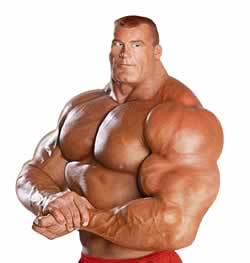 It seems like every month we learn about another professional athlete who has been caught doping. We hear over and over again about how out of control steroid use is and about how terrible it is for the children or it’s dangerous and of course let’s not forget the whole “level playing field” approach.
It seems like every month we learn about another professional athlete who has been caught doping. We hear over and over again about how out of control steroid use is and about how terrible it is for the children or it’s dangerous and of course let’s not forget the whole “level playing field” approach.
Of all of the concerns we should have for drug use among children, steroids should be the least of our worries.(7) and common sense would tell us that the playing field is level at least when it comes to athletes using steroids. According to various sources 75-90% of MLB was using steroids for multiple years. We know that the NFL was using for decades before it implemented its doping policy and neither of those compare to the State run doping program the DDR used for its Olympic Athletes during the 1980’s.
When it comes down to it, it seems as though everyone was doping until various testing protocols were put in place. We are lead to believe that this testing has reduced the number of steroids “abuser” and that it’s really working. The question is, how reliable are these doping tests?
In a recent study done by Strahm et al at the Swiss Laboratory for Doping Analyses not very reliable (1). They examined the T/E ratio and its variances between ethnic groups because of a testosterone over epitestosterone (T/E) ratio exceeding 4.0 is considered as suspicious of testosterone administration, irrespectively of individual heterogeneous factors such as the athlete’s ethnicity. Strahm and colleagues found that a deletion polymorphism in the UGT2B17 gene was demonstrated to account for a significant part of the inter-individual variability in the T/E between Caucasians and Asians. By estimation of the prevalence of the UGT2B17 deletion/deletion genotype (African:22%; Asian:81%; Caucasian:10%; Hispanic:7%), ethnic-specific thresholds were developed for a specificity of 99% for the T/E (African:5.6; Asian:3.8; Caucasian:5.7; Hispanic:5.8).
In other words the group at the Swiss doping lab found out that a blanket T/E ratio is not accurate enough for the testing protocol and that “significant differences have been observed between all ethnic groups.” There conclusion was “that an athlete’s endocrinological passport consisting of a longitudinal follow-up together with the ethnicity and/or the genotype would strongly enhance the detection of testosterone abuse.”

This isn’t the first time the Swiss Lab has examined the short comings of testing analysis. In 2006 Saudan et al. found that “detection of testosterone in urine samples appears suitable when the substance has been administered intramuscularly but oral administration (ie Andriol / testosterone undecanoate) leads to rapid pharmacokinetics, so urine samples need to be collected in the initial hours after intake. Thus there is a need to find specific biomarkers in urine or plasma to enable detection of long term oral administration of testosterone.” (2)
In short, if we are going to continue to waste millions of dollars testing athletes for steroids maybe it’s time the respective committee’s develop an accurate test.
- . Br J Sports Med. 2009 Mar 12. [Epub ahead of print] Steroid profiles of professional soccer players: an international comparative study. Strahm E, Sottas PE, Schweizer C, Saugy M, Dvorak J, Saudan C. Swiss Laboratory for Doping Analysis, Switzerland.
- Br J Sports Med. 2006 Jul;40 Suppl 1:i21-4. Testosterone and doping control. Saudan C, Baume N, Robinson N, Avois L, Mangin P, Saugy M.
- J Chromatogr B Biomed Appl. 1996 Dec 6;687(1):55-9. Increased urinary testosterone/epitestosterone ratios found in Swedish athletes in connection with a national control program. Evaluation of 28 cases. Garle M, Ocka R, Palonek E, Björkhem I.
- Clin Chem. 1997 May;43(5):731-5. Detection of anabolic steroid administration: ratio of urinary testosterone to epitestosterone vs the ratio of urinary testosterone to luteinizing hormone. Perry PJ, MacIndoe JH, Yates WR, Scott SD, Holman TL.
- Forensic Sci Int. 2008 Jan 30;174(2-3):166-72. Epub 2007 May 7. From population- to subject-based limits of T/E ratio to detect testosterone abuse in elite sports. Sottas PE, Saudan C, Schweizer C, Baume N, Mangin P, Saugy M
- Theor Med Bioeth. 2008;29(4):213-34. Epub 2008 Oct 22. Philosophy on steroids: why the anti-doping position could use a little enhancement. Kious BM.
- Vojnosanit Pregl. 2008 Jun;65(6):441-8.[Frequency and risk factors of the use of psychoactive substances among the young] Pavlovi? Z, Jakovljevi? B.
